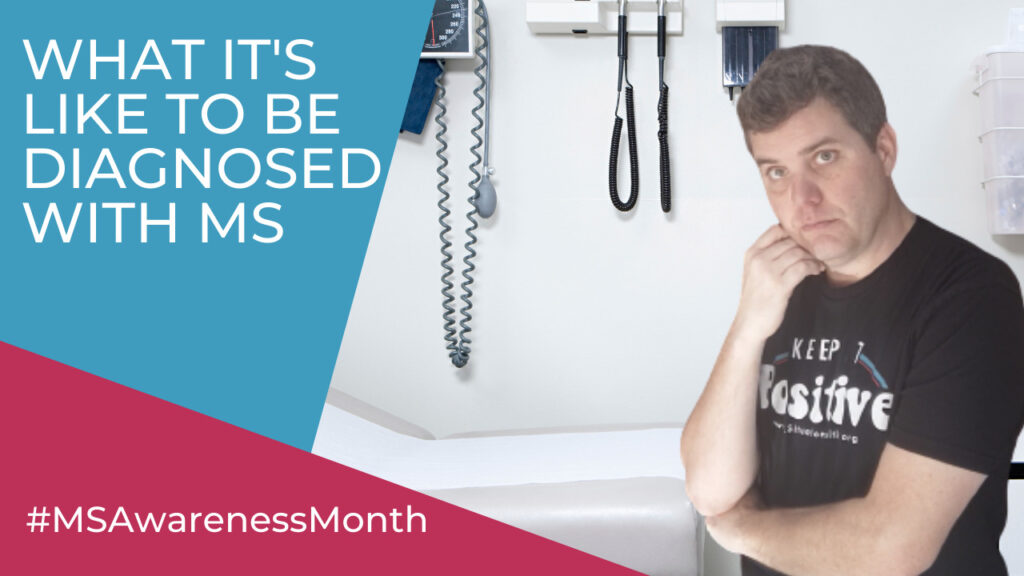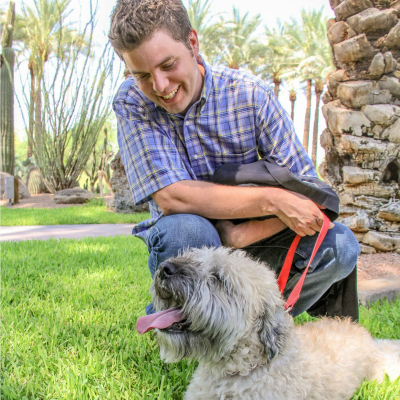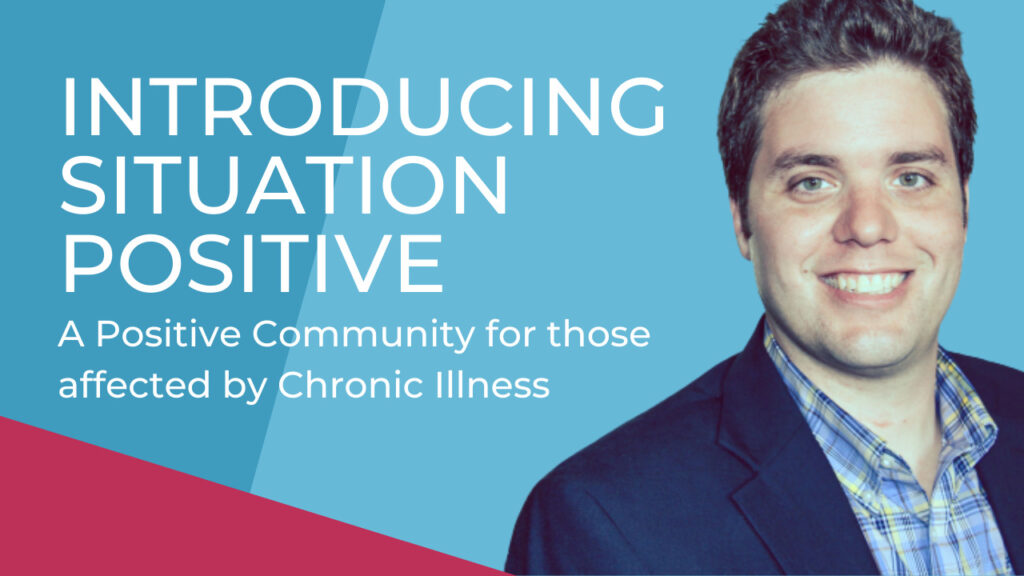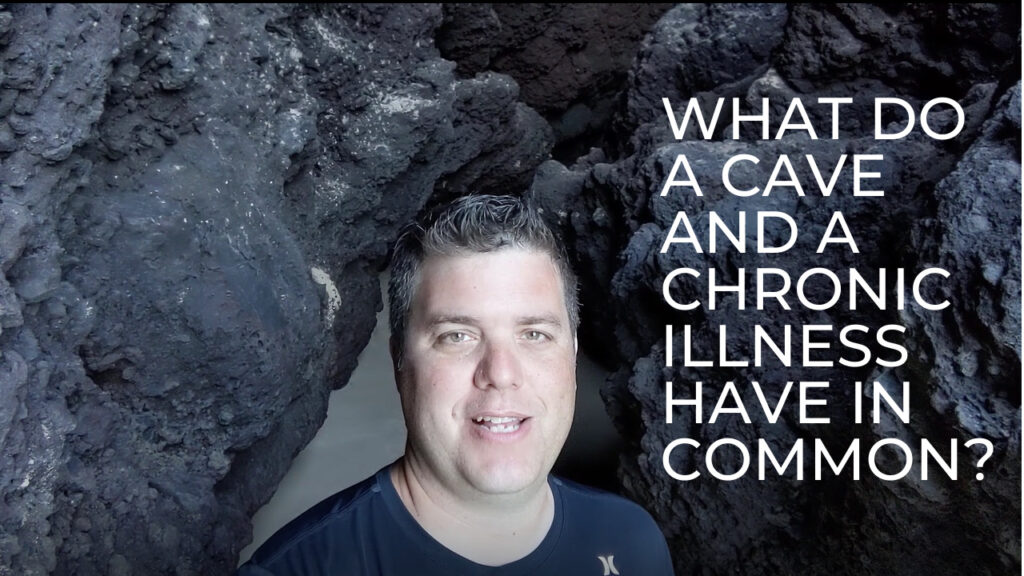I remember it like it was yesterday. It was May 2005. My wife just woke me up because she was going to work. She was a school counselor and she would leave a lot earlier than I did. So she would wake me up before she left to say goodbye. I had to get up. I was a real estate developer working in Boston at the time, and I had to get up and get ready and start my day.
Plus I really had to use the bathroom. So I, as I tried to sit up in bed and swing my legs over and put my feet on the ground, I noticed that my legs are really heavy. And as my feet touched the ground, we have tile floor and tile is usually cold in the morning. But I couldn’t feel the cold. Not only that I had these pins and needles in my, my feet.
Like I had slept on them wrong, but that had happened before it usually resolves in a minute or two. So I kinda pushed myself up out of bed. And as I did, I noticed that my legs were numb all the way up. I’d never had anything like that happen before. So I’d had like pins and needles in my feet, but never all the way up in my legs, let alone both legs and both feet.
So I was like, this is interesting. And I started thinking, I went to the gym the night before, so maybe I had pinched a nerve in my back or something. But I still really had to go to the bathroom. And even though it was interesting nature calls, so I tried to walk, but it was like I was stuck in glue. I couldn’t move at all.
So I would have to push myself off the wall and then kind of waddle and push from wall to wall to get down the hall to the bathroom. And when I got to the bathroom, the plumbing wasn’t working. And I don’t mean the toilet. As soon as I realized that I couldn’t go to the bathroom on my own. I knew that there was something seriously wrong and I needed to seek medical attention.
The problem was that my wife was already at work and being a school counselor. It’s very hard to reach her during the day. So I knew I was going to have to get to my primary care physician on my own. And so even though I could barely walk and I couldn’t feel my feet, I did what a big dumb guy would do.
And I got myself down to my truck. I pulled myself up into it and I use my legs to press down on the gas. And I got over to my primary care office. It was 2005. They didn’t have Uber at the time. So I, I did the best I could with what I got and all of a sudden, I’m in my physician’s office and it was a new physician.
I had never seen this guy before. And he had a kind of a nervous mannerism to him. And I could tell right away that he had never seen something like this before. Here I am. I’m thinking it’s a pinched nerve. But he would say things like Matt, wait right there. I going to make a phone call and he’d leave the room and come back and do some tests, then he’d be like, I need to go make another phone call.
You go, come back, make another test. And each time he was like, just nervous with his mannerisms. One of the times he even did that. A one-finger white glove test. I didn’t think I would get until I was like in my fifties. And then he left again. He finally comes back. And at this point I’m scared. I’m like, I don’t understand why he’s coming and going.
I don’t understand why he’s nervous. And he’s like, Matt, I need you to see a neurologist. And I’m in real estate development at the time. So I knew that neurology was the study of the brain, but I had no idea how my brain was connected to my numb feet and legs. So I got myself home. And it wasn’t safe. I wish I had never done that, but I did.
And when I got home, I pulled myself up into the house and onto a couch and I called the neurologist number that he gave me and the scheduler was like, we don’t have an appointment for three months. And I’m like, whoa, I can’t walk. I can’t go to the bathroom. My PCP said I need to get in there right away.
And she’s like, well, if you’re having symptoms, we can fill you in on Monday. Now, this was a Wednesday. So I had to wait from Wednesday to Monday. And during that time I went from being able to kind of walk a little bit, but pushing off walls to not being able to walk at all, I just stayed on the couch.
If I needed help either my wife or my parents would come over whoever, whoever could help me, whoever could lift me up. And I’m six-two, over 200 pounds at the time. That was no small feat for people. So Monday comes and I’m unable to leave my house on, on my own. My dad comes over and my wife and carry me out of the house, put me in the car, and gets me over to the neurologist’s office.
The neurologist does a series of quick tests. He rubbed some keys under my feet and I couldn’t feel them. He stuck a pin through my leg and I could see it pierce my flesh, but I couldn’t feel it at all. And then he’s like, Matt, I need you to go to the emergency room of the hospital right away. So they carry me back to the car and the emergency room only about a mile away from where we’re at.
And we get to the emergency room and they’re waiting for me. They have a bed right at the door. They put me in that bed and I’m going through the waiting room and through the double doors. And as I’m doing that, some guy stands up and he’s like, I’ve been waiting here three hours and I just kind of shrug and I’m like a little scared.
I’m like sorry, I didn’t know. And so next thing you know, I’m in the back of the hospital, I’m admitted I’m going through a series of complicated tests. I’m going through chest and back x-rays, cat scans, MRIs with them without contrast dye. And finally the most medieval of all neurological procedures, the spinal tap.
And they couldn’t go in my lower back was calcified, so they couldn’t get it in there. And so the doctor said he had to go up higher, it was more sensitive and he had to use a bigger needle. So finally he gets it in there. And then I wait on the day of my discharge, my doctor comes up to me and he says, Matt, you have something called transverse myelitis.
And I remembered that that’s what the primary care physician had said to me, but I couldn’t remember the name at the time. And so I couldn’t communicate it to my wife, this whole experience. We were in the dark. We weren’t able to talk about it and we weren’t able to research it. You know, the internet was kind of in its infancy back then.
So, you know, searching for stuff would give you a ton of scary results. So, this was kind of the first time that we had some clarity. I had transverse myelitis, which turned out to be a viral infection of the spine. My spine had swollen up and that’s why all functionality for the waist down had ceased to exist.
And they treated me with some IV steroids, but they were going to take a while for them to work. But then my doctor said something interesting, the neurologist. He said, Matt, you may have transverse myelitis, but we think it may have a root cause of something else. We think it may be sarcoidosis. And I couldn’t spell that.
So I was like, it’s probably not that. Right. And then the next thing was Lyme disease. And that made sense to me because I was this bouffant-headed kid who used to walk my dogs in the woods of Southern Massachusetts growing up. No doubt. I took a tick or two that my mom missed. The final thing was something called multiple sclerosis.
And that scared me because my aunt Loretta had multiple sclerosis and she died when I was only four years old. And my only living memory of her was she was in a wheelchair and she couldn’t talk. She could only mumble and moan. And here I am at 28 years old thinking that’s my fate. And all the whispers from my family said he looks like Loretta again.
I discharge in a wheelchair. I’m carried into the car and I’m carried into the house. I get a follow-up appointment about a month later because all the tests need to process all the results have to come together before the doctor can make an official diagnosis. During that time I started physical therapy. I started in a pool aquatic therapy where I’ve learned how to walk again in the pool.
And then once I kind of finished that program, they got me to land. So I start to step by step, be able to walk again first using the assist of a person then using like the assist of a cane. And finally June 10th, 2005, I was able to walk into my doctor’s office and he’s like, Matt, sit down. I don’t want to pull any punches.
I’m like, all right, give it to me straight doc. And he looks at me and he goes, Matt, you have probable multiple sclerosis.
And I’m like probable multiple sclerosis. What does that mean? Do I have it or do I not have it? And he goes, Matt, multiple sclerosis is a multiple occurring diseases. We won’t know until your next exacerbation, whether or not our diagnosis is confirmed. I’d like to say I handled it better, but I went into a deep depression and it stayed like that for a long time.
A month and five days later was my birthday. And I didn’t want to have a party because I had been pushing friends away. I didn’t want them to see me like this. I’d been pushing family away. I had just been married to my wife for three years. I felt like it wasn’t fair. I felt like I was a burden on everybody and I really retreated inside myself, but they insisted on having a birthday party.
And so we get to the party. We have some food we have some cake and then it’s time for the presents. And the final present I got was a book and I was thinking it was one of these like Yeah! You can do it, you can beat this thing, motivational type of book or holistic eat these leaves. And you’ll be cured type of book.
And as I ripped it open and I looked at the book, it was a book about the breed soft coat, Wheaton terrier, and I was confused because why would I be getting that book? And as I opened the book, I saw a handwritten note from my wife that said a litter had been born and we got the mail from the litter, my heart sank.
I had wanted a dog since before we got married and the timing was just never right. But now they got me this dog and the timing wasn’t right for me. I could barely walk. How was I going to be able to walk and take care of a dog? Not only that my aunt Loretta died eight years after being diagnosed with MS.
How could I get this dog? If it might outlive me? But as I looked around the room and I made eyes with my wife, I knew at that moment that she needed me to have the dog more than I ever wanted the dog. So I grabbed her, I hugged her. I told her I loved her and I promised her on that day, no matter what my MS was doing, I would walk that dog once before work.
And once after work, it’s been over 15 years now. And I’ve not missed a day. And by now you can probably tell that I have multiple sclerosis. Mine is a diagnosis story, similar to what many people have been through. As a matter of fact, over 2.7 million people on this earth are living with multiple sclerosis making it the most common neurological disorder. March is MS Awareness Month. So I wanted to share my diagnosis story to raise awareness of what the experience might be of a person being diagnosed with MS. I’ve gone on to do some great things since being diagnosed with MS. So just know what I would say to newly diagnosed people is it’s not a death sentence.
You can live a long, healthy, and productive life with MS. There are a lot more treatment options available than when my aunt Loretta or even I was diagnosed. So I would also say that this is the best time in history to ever be diagnosed with MS.
The final thing I would say is don’t give up hope just because MS happens to you. That does not have to do. Put an end to your hopes and your dreams. You can still do everything that you had prior to MS. Sure. It might be a little bit different, but if you believe it, you can achieve it. My name is Matt Cavallo. This has been Situation Positive. We are a positive community for people. For people living with chronic diseases like MS. Please like, and subscribe to our channels. It helps our community grow. And remember, no matter what happens to you, you can turn your situation positive.
Podcast: Play in new window | Download (Duration: 16:43 — 30.6MB)





